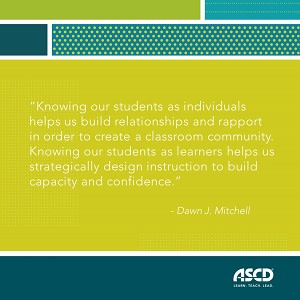1. Build from Birth
When young children apply the new knowledge they’re learning into their play, they extend their learning in ways that are motivating and meaningful.
2. Grow Vocabulary
- Rethink “story time” to include age-appropriate information books as well as storybooks. Research has shown that text genre affects the types of conversations adults and children have during read-alouds. For example, teachers who read informational texts aloud interject more often with more cognitively demanding comments and questions compared to when they read storybooks. Genre also affects the type of words encountered during reading. Narrative texts tend to include more words about mental states and temporal connections (such as “think” and “before”), whereas informational texts tend to include words that are more academic and conceptually dense (such as “predict” and “investigation”).
- Revisit words and concepts in multiple contexts. We typically don’t learn a word or concept with just one exposure. Revisiting words and concepts is key for vocabulary development. For example, in addition to providing a brief explanation of key words as they are encountered in a text, we can revisit the words after reading—for instance, for slither, showing a video of a snake slithering and giving children an opportunity to try slithering themselves, or for perspective, engaging students in comparing different perspectives on the same historical event.
- Develop vocabulary within science and social studies. Well-designed instruction can help students learn new content knowledge and practices as well as vocabulary. For example, in one preschool science curriculum, children engage in core science practices such as observing, asking questions, and reflecting as they experience content-related learning centers in the classroom, read-alouds, and other experiences. A study of Head Start students found that after 10 weeks of this curriculum, students had learned the target science concepts and showed significant gains in receptive language. Similar findings have come from studies that have included social studies.
- Teach words in categories. Because we organize words and concepts in our minds into schemas and networks among them, it is effective to teach words that are conceptually or contextually related. Techniques such as semantic or concept mapping help children relate words and concepts to one another and to what they already know, and to the experiences they are having in and outside of the classroom.
3. Lead Discussions That Promote Student Talk and Comprehension
At all ages, classroom discussions are a prime opportunity for students to build and strengthen their knowledge, and those discussions can be a feature of a deep and coherent unit of study.
- Instructional Conversations: In some ways, Instructional Conversations resemble the sorts of high-quality conversations that children have with peers and adults outside of school. Students talk with one another, with the teacher facilitating. They co-create knowledge, rather than listening as the teacher transmits whatever information is the day’s instructional goal. In Instructional Conversations, teachers incorporate a thematic focus, prompt students to draw on their knowledge, and support learning with direct teaching when needed. They prompt students to use complex language and expression and provide evidence for their position. The conversation is steered by questions that have more than one correct answer and connected by utterances that build on one another. This approach is effective for a wide range of learners, including multilingual learners, and is particularly powerful when paired with students keeping logs of what they are reading and discussing.
- Questioning the Author: This strategy empowers students to discuss and build understanding while they are reading a text. It conveys a powerful idea: that texts are “just someone’s ideas written down” and that authors are fallible human beings, just like students. This notion lets students share ownership of a text’s meaning, which they create through discussion. Teachers pose queries focused on the author, such as “What is the author trying to say here?” and “Does the author tell us why?” The teacher and students operate on the assumption that the author does not always convey meaning as effectively as one might like, and together the class works to understand the author’s message and integrate that with their existing knowledge. This approach supports informational and narrative comprehension development.
An Essential Reading List for Literacy Research
Scholars from the Scientific Advisory Committee share freely-accessible articles on knowledge-building and comprehension.

The Knowledge Matters Campaign promotes excellent instructional practices in schools and raises awareness of the importance of content knowledge to reading comprehension and critical thinking. The Campaign receives guidance from a distinguished group of 14 education researchers who constitute the Scientific Advisory Committee. While this group is not formally associated with the Campaign and does not directly endorse—as a group or as individuals—its work, they are committed to advancing educators' understanding of how children learn to read and write.
Marilyn Jager Adams
Visiting Scholar, Brown University
Ana Taboada Barber
Professor and Associate Dean, Research, Innovation and Partnerships, College of Education, University of Maryland
Sonia Cabell
Associate Professor of Education, Florida Center for Reading Research, Florida State University
Hugh Catts
Professor of Communication Science and Disorders, Florida State University
Anne E. Cunningham
Professor, Learning Sciences and Development, Berkeley School of Education, University of California, Berkeley
Nell Duke
Professor of Literacy, Language, and Culture and in combined Program in Education and Psychology, University of Michigan
Lily Wong Fillmore
Professor Emerita, Graduate School of Education, University of California, Berkeley
Claude Goldenberg
Nomellini & Olivier Professor of Education, Emeritus, Graduate School of Education, Stanford University
Danielle McNamara
Professor, Department of Psychology, Arizona State University
Kate Nation
Professor of Experimental Psychology, University of Oxford
Susan Neuman
Professor, Early Childhood and Literacy Development, Steinhardt School of Culture, Education, and Human Development, New York University
Kathleen Rastle
Professor of Cognitive Psychology, Royal Holloway University of London
David Steiner
Executive Director, Johns Hopkins Institute for Education Policy
Daniel Willingham
Professor of Psychology, University of Virginia








